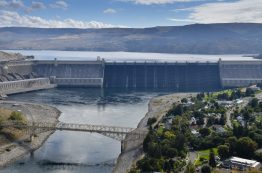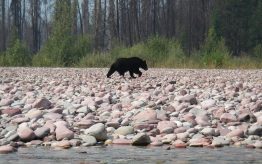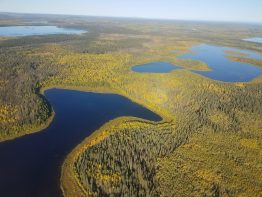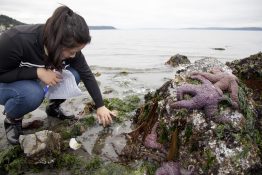Just over one-third of the world’s 246 longest rivers remain free-flowing, according to a new study published May 8 in Nature. Dams and reservoirs are drastically reducing the diverse benefits that healthy rivers provide to people and nature across the globe. A team of 34 international researchers from McGill University, World Wildlife Fund, the University of Washington and other institutions assessed the connectivity status of 12 million kilometers of rivers worldwide, providing the first-ever global assessment of the location and extent of the planet’s remaining free-flowing rivers.
Read more at UW News »Assessing riverside corridors — the ‘escape routes’ for animals under climate change — in the Northwest
Under climate change, plants and animals will shift their habitats to track the conditions they are adapted for. As they do, the lands surrounding rivers and streams offer natural migration routes that will take on a new importance as temperatures rise. An open-access study led by the University of Washington pinpoints which riverside routes in Washington, Oregon, Idaho and western Montana will be the most important for animals trying to navigate a changing climate.
Read more at UW News »Many Arctic lakes give off less carbon than expected
The Arctic is warming twice as fast as the rest of the planet. One consequence of that trend is the thawing of permafrost, a layer of earth that has remained frozen for thousands of years in some areas. This frozen soil and vegetation currently holds more than twice the carbon found in the atmosphere. As permafrost across northern Alaska, Canada, Siberia and other high-latitude regions thaws, microbes in the soil consume organic materials, releasing carbon dioxide or methane, an even more potent greenhouse gas, into lakes and the atmosphere.
Read more at UW News »University of Washington announces new marine biology major
The bachelor of science from UW Environment launched in autumn 2018.
Visit the Marine Biology website »Sockeye carcasses tossed on shore over two decades spur tree growth
For 20 years, dozens of University of Washington researchers have walked Hansen Creek — home to one of the densest sockeye salmon runs in Alaska’s Bristol Bay region — every day during spawning season, counting live salmon and recording information about the fish that died. After counting a dead fish — an inevitability here, either after spawning or in the paws of a brown bear — researchers throw it on shore to remove the carcass and not double-count it the next day.
Read more at UW Today »





